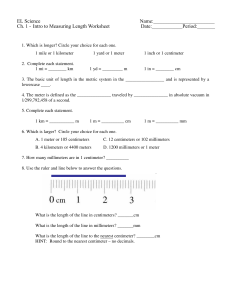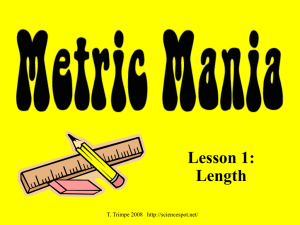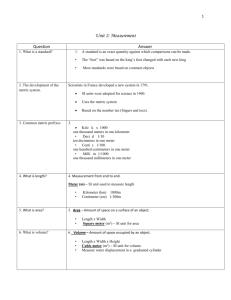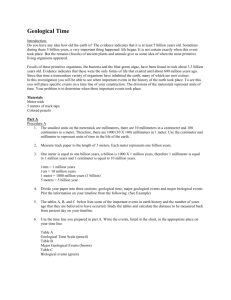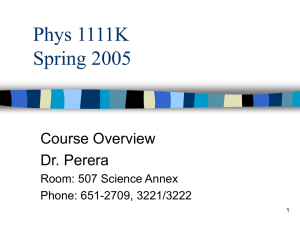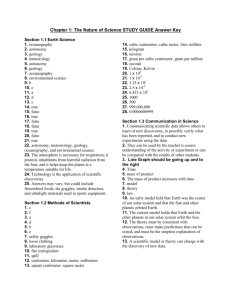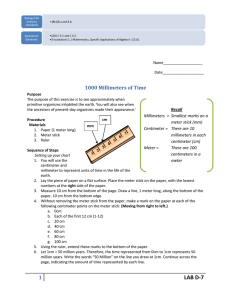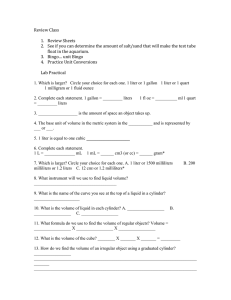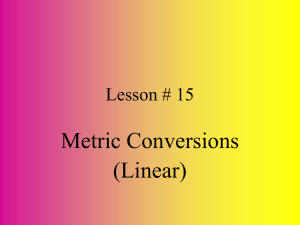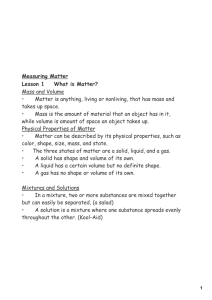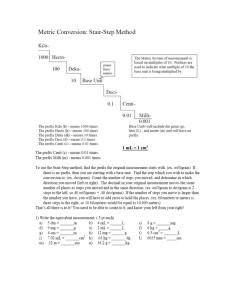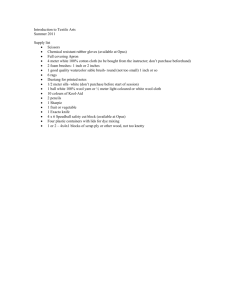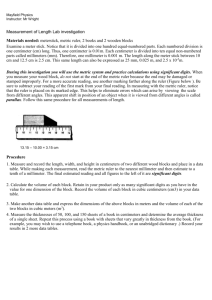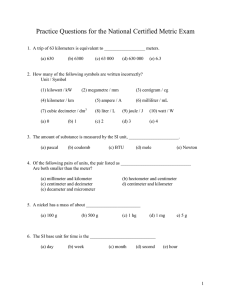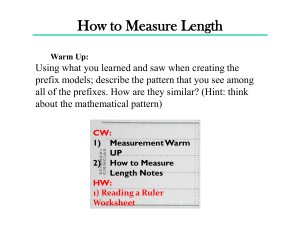Chapter 1 PowerPoint – Introduction to Biology and Measurement
advertisement
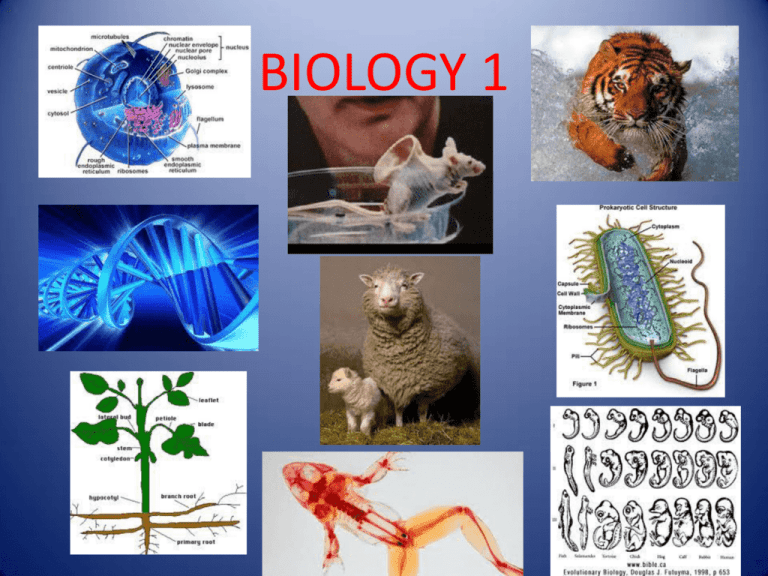
BIOLOGY 1 What is Science? • Science = an organized way of gathering and analyzing evidence about the natural world – Provides natural explanations for events in the natural world – Uses those explanations to understand patterns in nature and to make predictions about natural events The Scientific Method • Observation – noticing and describing events in an orderly way • Hypothesis – a scientific explanation for a set of observations that can be tested The Scientific Method Continued • Controlled experiment – an experiment where only one variable is changed – Independent Variable – the variable that is changed by the experimenter – Dependent Variable – the variable that changes in response to the independent variable Independent/Dependent Variables Examples of experiments – 1) Do high school students get better grades if they sleep 8 hours the night before a test ? Independent variable – Amount of sleep Dependent variable – Grade on the test 2) Do people who take vitamins get sick less often? Independent variable – Taking a vitamin Dependent variable – How often people get sick Data Collection • Collect and analyze data – Quantitative data – numbers obtained by counting or measuring (height, number of leaves, etc.) – Qualitative data – descriptive observation (direction of movement, description of appearance, etc.) Drawing Conclusions • Did the experiment support the hypothesis? • What new hypotheses can be made and tested? • In biology, not all hypotheses can be tested in a controlled experiment– ex. Does taking prenatal vitamins during pregnancy cause a higher IQ Scientific Theory • Theory = a well-tested explanation that unifies a broad range of observations and hypotheses – Theories have been tested and supported by many lines of evidence – They are the dominant view among scientists Living Things!!!!!! Characteristics of Living Things 1) 2) 3) 4) 5) Universal genetic code – DNA Grow and develop Respond to their environment Reproduce (sexually or asexually) Maintain a stable internal environment = homeostasis 6) Obtain and use material and energy = metabolism 7) Made of cells 8) As a group – they evolve (change) Measurement Metric Unit Unit Instrument Length meter (m) ruler Mass gram (g) balance Volume liter (l) graduated cylinder Temperature Celsius (C) thermometer Measurement Continued kilo - 1000 (1 kilometer = 1000 meters) centi = 1/100 (1 centimeter = 1/100 meter) (in other words – there are 100 centimeters in 1 meter) milli = 1/1000 (1 millimeter = 1/1000 meter (there are 1000 millimeters in 1 meter) (there are 10 millimeters in 1 centimeter) • millimeter = mm centimeter = cm

